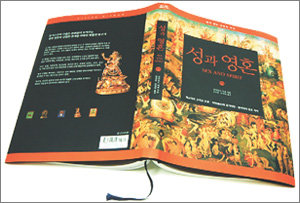Sex and Soul

One of the most believable and generally accepted ideas about sex is that it is related to the animal instincts of a human being. However, animal mating and human beings sex belong to totally different dimensions.
This book, Sex and Soul, focuses on the religion-oriented sexual culture among many cultures. From examples of the ancient primitive shamanic magic to modern virtual reality, and from other examples such as the North Poles Eskimos to the African minority tribes, this book illustrates a panoramic view on how diverse cultures have understood the relationship between sex and soul and how they actually performed it. If you think of sex as something only happening within the physical domain, perhaps relating sex with the soul could sound irrelevant. But this book proves that the sexual cultures have developed through the close ties between human beings personal, social, and spiritual experiences by providing various examples from all times and places.
The author pointed out in the preface, Sex has been considered to be a symbolic measure to heal the disconnection between the universe and ones ego. He further said, Sex has been functioning as a form of fascination and has become a passage to personal transcendence. This implies that even when a person is engaging in the most extreme form of physical pleasure, the experience also has spiritual, transcendental, and mental significance.
The two most well known examples are Indias Tantra and Chinas Taoism. In these two religions, which greatly influenced each other thanks to the Buddhist monks who traveled between Indian and China, sex is directly connected to the enlightening procedure.
As in the western sexual mysticism tradition, these religions used sex as a tool for achieving personal transcendence; thus, a sexual experience became a spiritual experience.
Not every example is this obvious, but this book shows that whenever one traces back to the origin of sexual cultures in the world, he will find that a religious ritual was at the end.
Even regarding the western Christian stoic traditions, which can be considered to be the exact opposite of the prior examples, the author said, Most things the western world perceives as sins have nothing to do with religious scriptures. He added, The list of sins was made by a small number of people in the end of the Roman Empire of the fourth and fifth centuries, and that list was distributed and modified by the increasingly powerful church system. The author noted that even this stoic perception of sex originated from the obsession about soul and the determination to be near to God rather than from the unhealthy disrespect to ones body.
This book consists of many more interesting examples. There is an Aphrodite temple in Papos, Cyprus. The women in this city had to prostitute to a stranger in the temple once before marriage. After the prostitution, they were still considered to be virgins, and if a baby was born as a result of this prostitution, the baby was raised in the temple as a virgins child.
Also, through the example of South Americas Cubeo tribe and Africas Tutsi tribe, where sex between a son and his mother is officially allowed, the book shows that seemingly the strongest cultural taboo can be challenged depending on ones culture.
iamddonggae@hotmail.com







